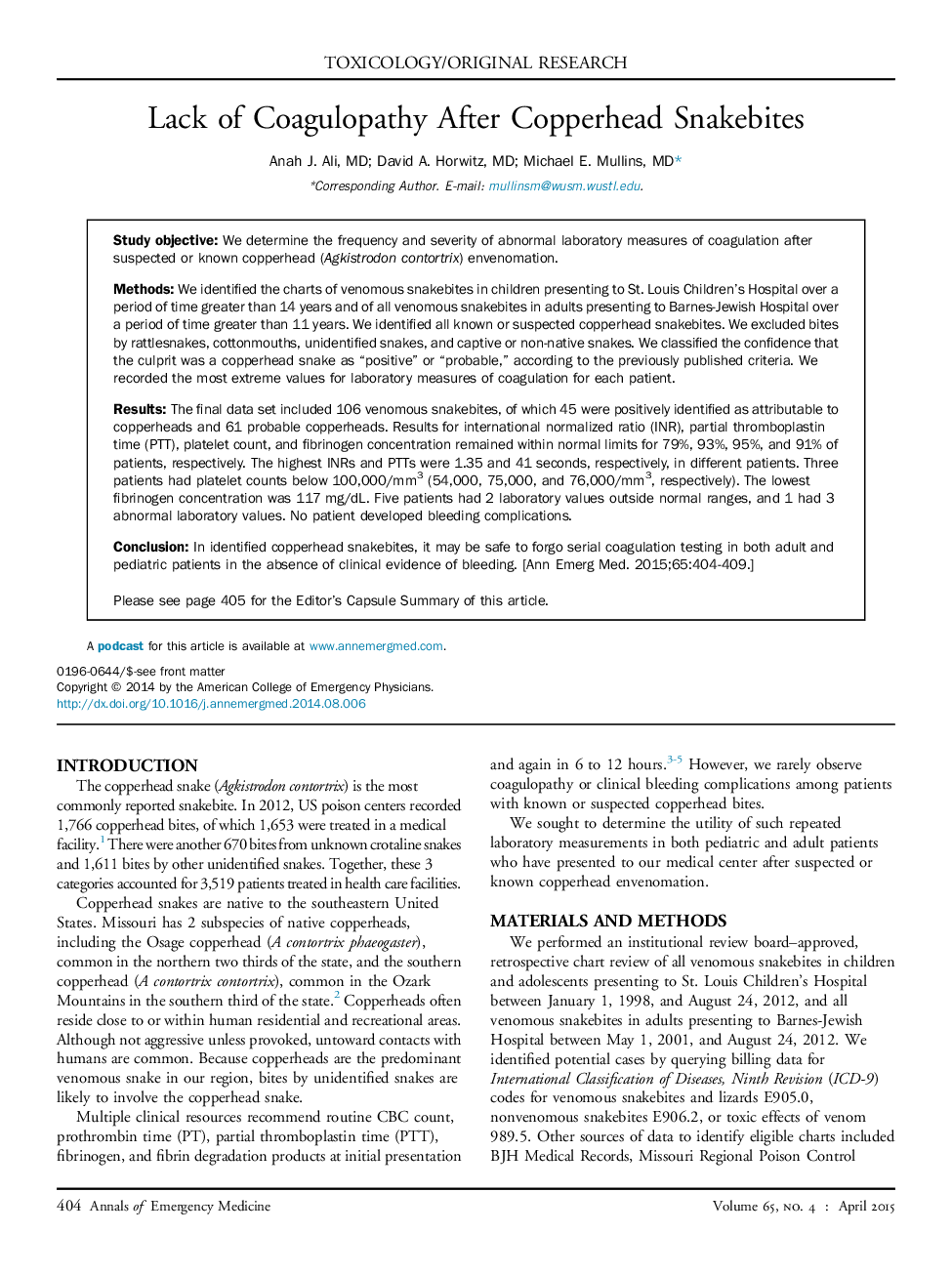| Article ID | Journal | Published Year | Pages | File Type |
|---|---|---|---|---|
| 3228792 | Annals of Emergency Medicine | 2015 | 6 Pages |
Study objectiveWe determine the frequency and severity of abnormal laboratory measures of coagulation after suspected or known copperhead (Agkistrodon contortrix) envenomation.MethodsWe identified the charts of venomous snakebites in children presenting to St. Louis Children’s Hospital over a period of time greater than 14 years and of all venomous snakebites in adults presenting to Barnes-Jewish Hospital over a period of time greater than 11 years. We identified all known or suspected copperhead snakebites. We excluded bites by rattlesnakes, cottonmouths, unidentified snakes, and captive or non-native snakes. We classified the confidence that the culprit was a copperhead snake as “positive” or “probable,” according to the previously published criteria. We recorded the most extreme values for laboratory measures of coagulation for each patient.ResultsThe final data set included 106 venomous snakebites, of which 45 were positively identified as attributable to copperheads and 61 probable copperheads. Results for international normalized ratio (INR), partial thromboplastin time (PTT), platelet count, and fibrinogen concentration remained within normal limits for 79%, 93%, 95%, and 91% of patients, respectively. The highest INRs and PTTs were 1.35 and 41 seconds, respectively, in different patients. Three patients had platelet counts below 100,000/mm3 (54,000, 75,000, and 76,000/mm3, respectively). The lowest fibrinogen concentration was 117 mg/dL. Five patients had 2 laboratory values outside normal ranges, and 1 had 3 abnormal laboratory values. No patient developed bleeding complications.ConclusionIn identified copperhead snakebites, it may be safe to forgo serial coagulation testing in both adult and pediatric patients in the absence of clinical evidence of bleeding.
